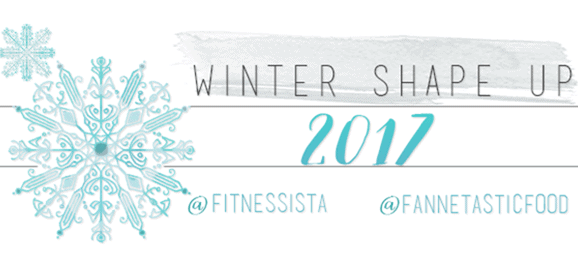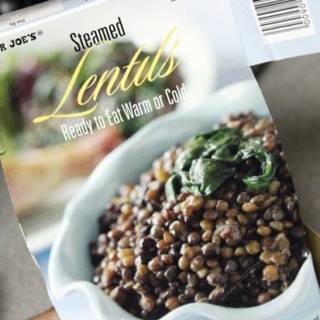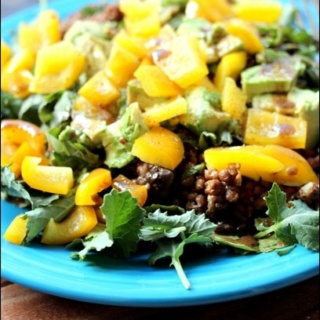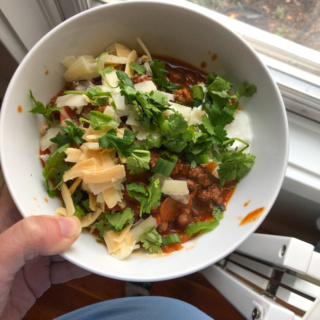Welcome to week 3 of the 2017 Winter Shape Up, which begins on Monday, February 13, 2017!
(Looking for the home base Winter Shape Up page? Click here – it has answers to any questions you might have about the challenge and links to all the weekly content!)
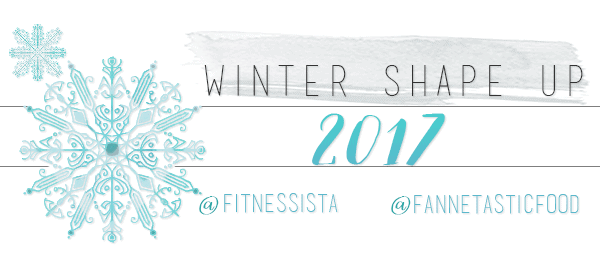
Want to save this post?
Enter your email below and get it sent straight to your inbox. Plus, I'll send you great content every week!
As you know, my friend Gina and I have partnered up to bring you this fun healthy living 4 week challenge to inspire you to kick off the year on the right foot in terms of fitness and nutrition. Gina is a personal trainer, so on her site, you’ll find the weekly workouts for the challenge, including videos (which I’m also in this year – we filmed them together in beautiful San Diego). Here on mine, I’ll be sharing the weekly nutrition-focused content, which will feature regular, gluten free, and vegan meal plans – as well as quick snack ideas and some make-ahead snack recipes.
We’d love to hear how you guys are doing with this challenge! If you share updates or photos on social media, please include #WinterShapeUp and, if you have space, tag both myself (@fANNEtasticfood – follow me on Twitter, Facebook, and Instagram!) and Gina (@fitnessista) so we can see! ![]()
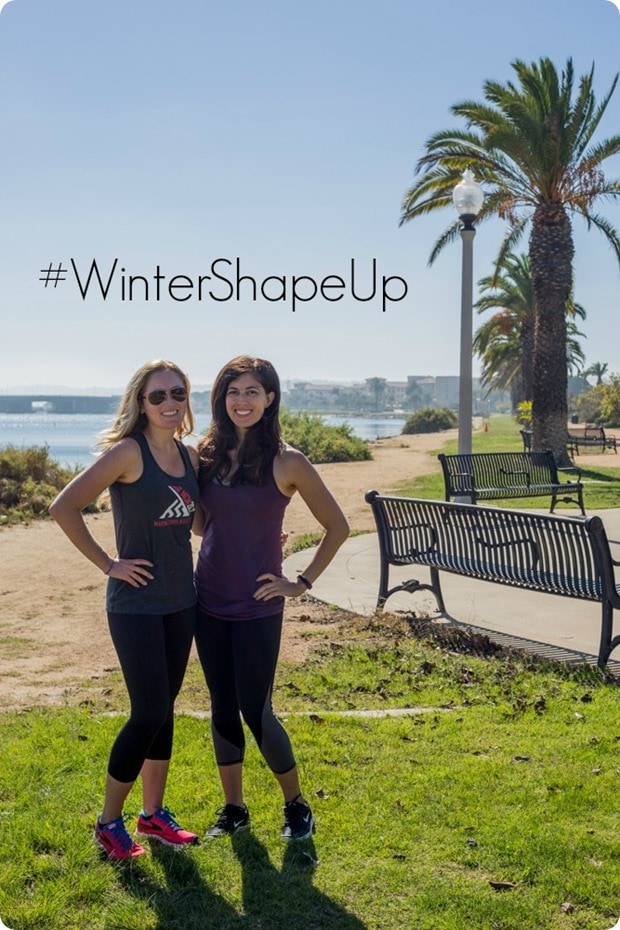
Before I get into the plan, please remember that everyone’s nutrition needs are different and will vary based on activity level, age, gender, height/weight, and more. I am a Registered Dietitian, but this meal plan is not meant to be a substitute for personalized nutrition plans or nutrition counseling (like I provide in my AnneTheRD private practice). Above all, use this as a guide, not a concrete plan, and change it as you see fit based on your own hunger levels, preferences, and dietary needs. I’m not including specific quantities/portion sizes because of this – try to eat intuitively and listen to your body. This guide may be too much food for some of you and too little for others. If you’re getting full, save the rest for later. If the meal or snack wasn’t enough, don’t second guess yourself – listen to your body and have something else. If you’re really hungry and try to deny it, it will only lead to overdoing it later or feeling like crap. Honor your hunger, my friends. And same with the other end of the spectrum – stay mindful during your meals, and stop as soon as you start to get full. If you’re distracted, it’s a lot easier to overeat. Your body knows what to do if you just listen to it! Sound good?
A note on drinks: I didn’t include drinks in this guide, but aim to limit sugar-sweetened beverages. If you’re currently having a lot of sugar-sweetened beverages (soda, sweet tea, sweet flavored water, etc.), try to cut back by 1 or 2 drinks per week until it becomes an occasional treat vs. a daily habit. Focus on drinking lots of water (carbonated water with fruit in it is a nice sweet, fizzy alternative to soda – as is kombucha), some unsweetened tea/coffee (if you’re into it), and the occasional wine or beer, if you like.
Regarding dessert, it’s not included in the plan for simplicity’s sake, but indulgence in moderation is certainly part of a healthy relationship with food. The key is to view dessert as an occasional treat vs. letting it become an everyday habit. If you really want something, by all means allow yourself to have it and really savor it. There’s no point in feeling guilty – eating perfectly 100% of the time isn’t realistic or healthy. Just make sure that when you do indulge, it’s worth it. Choose the real thing, not a diet imitation; stay mindful and stop when you are satisfied.
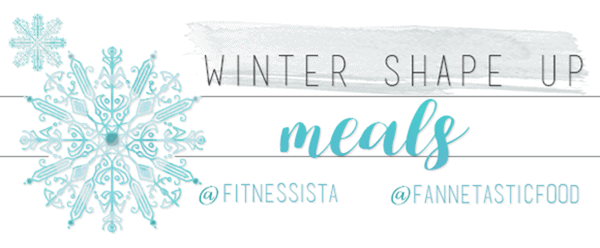
To download the week 3 meal plan, please click here.
If you have any problems downloading the meal plan or see any errors, please let me know! It also includes grocery lists (including vegan and gluten free variations).
For snacks, choose a variety each day based on hunger levels. Some days you might need a snack or even two or three, while other days you might not need one at all. Focus on how you feel. Hunger levels change daily based on activity and a host of other factors, so don’t expect to feel the same every day. For snacks, just like meals, focus on a good mix of carbs, protein, and healthy fat to keep you satisfied.
To download the simple snack ideas PDF, click here. Here are some make-ahead recipes to try out this week too:
- 5-Minute No Bake Peanut Butter Granola Bars (vegan, gluten free if you use GF certified oats)
- Dark Chocolate Quinoa Bars (gluten free)
- Healthy Peanut Butter Power Cookies (vegan, gluten free)
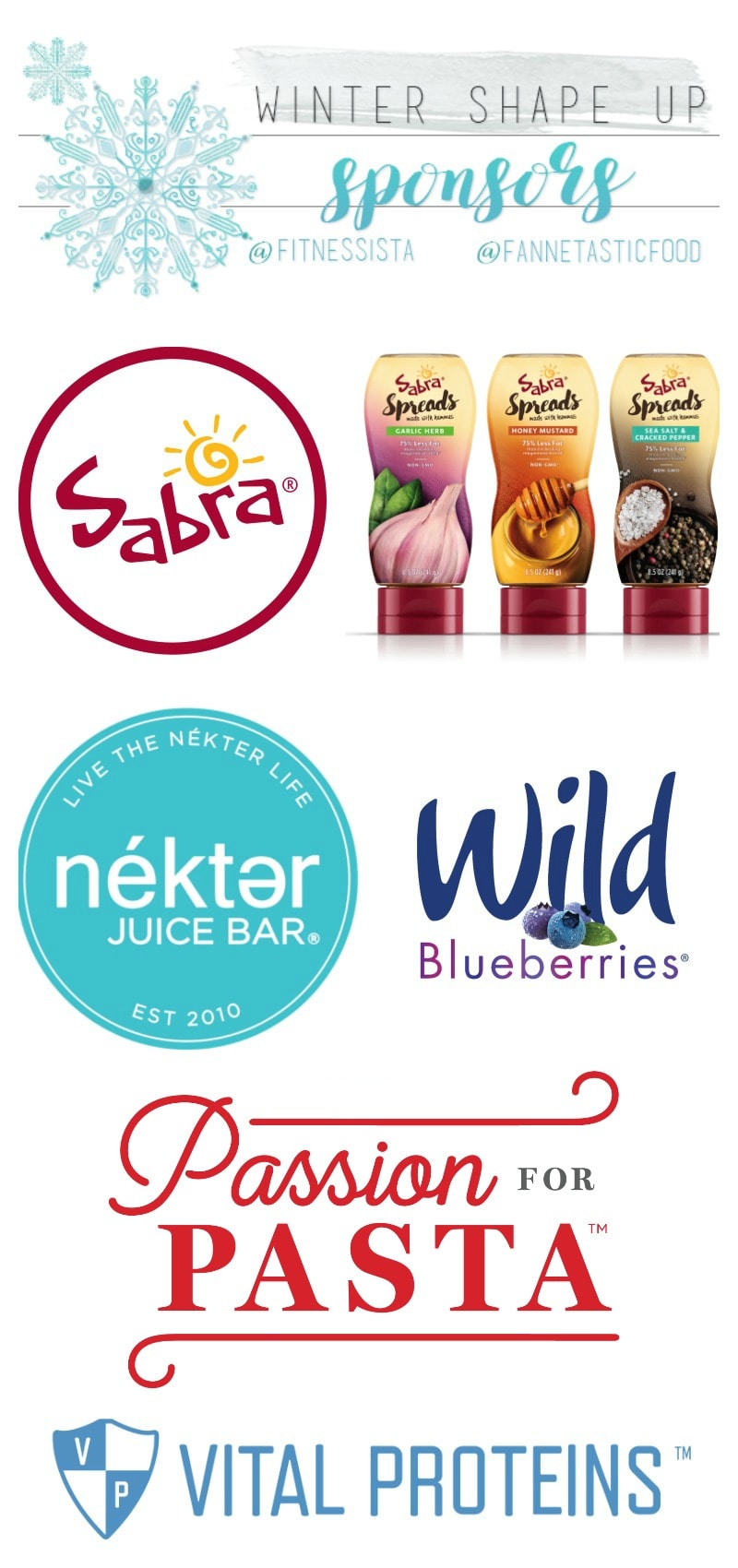
This week’s featured sponsor is Passion for Pasta! I was really excited when they came on board as a sponsor this year because it helps to drive home the fact that healthy eating is all about balance and not depriving yourself of the foods you love (like pasta!), because that’s not sustainable!
You’ll see two great Passion for Pasta recipes featured in this week’s meal plan, and here are fun YouTube recipe videos of how to make them, if you’re interested: Campanelle with Lentils and Porcini Mushrooms and Mostaccioli with Shrimp & Cannellini Beans.
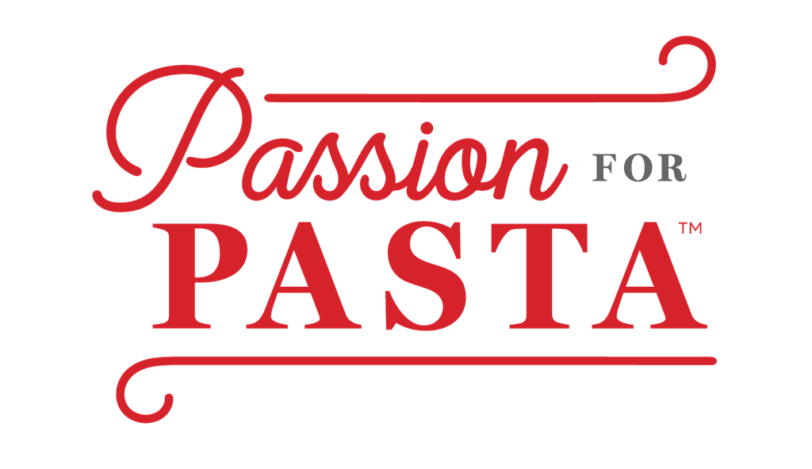
A lot of my private AnneTheRD clients come to me feeling guilty or bad about eating pasta (and other carbs), which makes me sad because carbs are not only necessary for energy but also delicious – and you shouldn’t feel guilty about eating something delicious, my friends! Also – if you try to skimp on carbs it will just come back at you later in the form of sugar cravings. (See also: How to Get Rid of Sugar Cravings.)
What’s key is eating carbs (like pasta) the right way. As a guide, I like to take a page out of the Italians’ book. Pasta is a fundamental component of a traditional Mediterranean diet – an eating pattern that is considered by nutrition experts to be one of the world’s healthiest ways to eat. In fact, recent research even showed that eating pasta regularly was associated with better adherence to a Mediterranean-style diet. What’s critical is that in Italy, pasta is eaten healthfully and in reasonable portions, paired with other nutrient-rich foods like vegetables, beans, lean proteins, olive oil and herbs.
Often the problem in the U.S. is that many people eat carbs without adding protein and fat, and then find themselves hungry an hour later and feel like they can’t stop eating. So, the key is to balance your carbs (like pasta) with some great veggie volume, protein, and fat, so it’s satisfying. Even better, traditional semolina pasta is unique in that it contains proteins and complex carbohydrates and has a low glycemic index, which means the body breaks it down more slowly than most other refined grains, providing steady energy for hours after you’ve eaten. So if you usually have a big plain bowl of pasta, try dishing up one serving of pasta (about the size of a baseball) with veggies and add some protein, like beans, chicken, or shrimp. You’ll be eating the same volume of food but it will be more satisfying and nutrient packed. 🙂
A couple other things you might find interesting:
- Pasta cooked “al dente” (still slightly chewy) also has a lower glycemic index (GI) when compared to fully cooked or overcooked pasta – interesting!
- Pasta is made from durum wheat, which is a variety of wheat that has a higher protein content than regular wheat.
**Passion for Pasta has generously offered to send one lucky winner a gorgeous colander (for your pasta-cooking passion, of course!) filled with a variety of pasta and pasta sauces.
Comment below up to once per day (starting on Monday) with how things are going for you during the challenge/what meals and snacks you’ve been loving and each comment will count as an entry! I’ll randomly select the winner after the week is over (Monday morning) and notify them directly by email. Good luck! And don’t forget to check in over on Gina’s blog with your fitness updates – she’ll be sharing a giveaway from a different sponsor!


